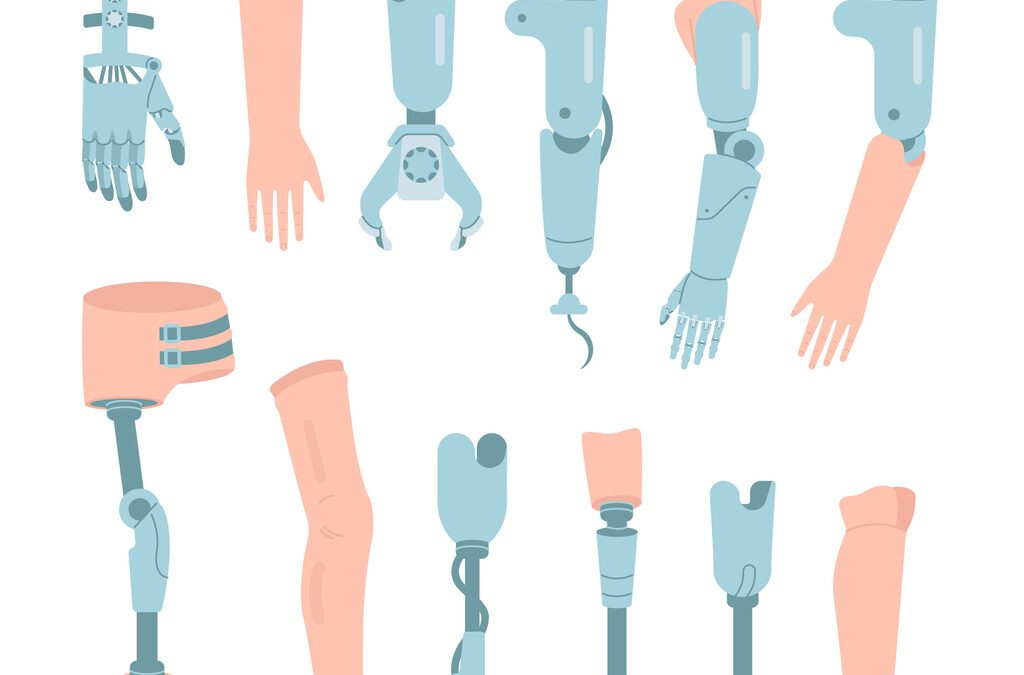Making Prosthetics Accessible to All With 3D Printing
Technology is not just about innovation; it’s about making a real difference in people’s lives. Nowhere is this more evident than in the field of prosthetics, where advancements in 3D printing are revolutionizing the way we approach limb replacement. From personalized designs to improved functionality, 3D printed prosthetics are empowering individuals with limb loss to reclaim their independence and live life to the fullest. In this blog we will explore the transformative impact of 3D printed limb solutions and the profound difference they are making through several unique case studies..
Personalization: Tailoring Prosthetics to Fit Every Individual
One of the most significant advantages of 3D printed prosthetics is the ability to customize designs to meet the unique needs of each patient. Traditional prosthetic devices often come in standard sizes and shapes, leaving little room for personalization. With 3D printing technology, prosthetists can create solutions that are perfectly tailored to the individual’s anatomy and lifestyle. Whether it’s a prosthetic hand, arm, or leg, 3D printing allows for precise adjustments and modifications, ensuring optimal comfort, fit, and functionality.
Affordability: Making Prosthetics Accessible to All
Cost has long been a barrier to access for many individuals in need of prosthetic limbs. Traditional prosthetics can be prohibitively expensive, especially for those without insurance coverage or in low-income communities. 3D printing offers a more affordable alternative, significantly reducing production costs and making prosthetics more accessible to a broader range of people. By leveraging open-source designs and inexpensive materials, organizations around the world are using 3D printing to provide low-cost prosthetic solutions to those in need, helping to bridge the gap between affordability and necessity.
Innovation: Pushing the Boundaries of Functionality
Beyond customization and affordability, 3D printed prosthetics are driving innovation in functionality and design. Advanced materials and engineering techniques allow for the creation of lightweight, durable, and highly functional prosthetic devices that mimic the natural movement of human limbs. From intricate articulation mechanisms to intuitive control systems, 3D printed prosthetics are pushing the boundaries of what is possible, enabling individuals to perform daily tasks with greater ease and confidence.
Empowerment: Restoring Independence and Confidence
Perhaps most importantly, 3D printed prosthetics are empowering individuals with limb loss to reclaim their independence and confidence. For many, the ability to perform simple tasks like picking up objects, walking, or even hugging a loved one can have a profound impact on their quality of life. With 3D printed prosthetics, individuals can regain mobility, dexterity, and freedom, allowing them to live life on their own terms and pursue their passions with renewed vigor.
Case Studies:
Case Study 1: Customized Prosthetic Hand for a Young Amputee
Patient Profile: A 10-year-old child, Sarah, who lost her right hand in a traumatic accident.
Challenge: Traditional prosthetic solutions were often uncomfortable for Sarah and limited her dexterity and range of motion.
Solution: Utilizing 3D printing technology, a team of engineers and prosthetists created a custom-designed prosthetic hand tailored to Sarah’s specific anatomical requirements and preferences. The hand was lightweight, durable, and precisely modeled to mimic the natural movements of a human hand.
Outcome: With her new 3D printed prosthetic hand, Sarah experienced a significant improvement in her quality of life. She regained confidence in performing daily tasks and participating in activities such as writing, playing sports, and interacting with her peers. The precision fit and advanced functionality provided by the 3D printed prosthetic hand allowed Sarah to live a more independent and fulfilling life.
Case Study 2: Personalized Prosthetic Leg for a Veteran
Patient Profile: John, a military veteran who lost his lower leg in combat.
Challenge: John struggled with discomfort and instability while using a traditional prosthetic leg, limiting his mobility and causing chronic pain.
Solution: Leveraging 3D printing technology, prosthetists worked closely with John to design and fabricate a customized prosthetic leg that addressed his specific biomechanical needs. The prosthetic leg was meticulously crafted to optimize weight distribution, enhance shock absorption, and provide superior comfort and stability.
Outcome: With his new 3D printed prosthetic leg, John experienced a remarkable improvement in his mobility and quality of life. The precise fit and advanced functionality of the prosthetic leg allowed him to walk, run, and engage in various physical activities with confidence and ease. John regained independence and resumed his active lifestyle, demonstrating the transformative impact of 3D printed limb solutions on enhancing the well-being of amputees.
Case Study 3: Innovative Exoskeleton for a Paralympic Athlete
Patient Profile: Emma, a Paralympic athlete who sustained a spinal cord injury and lost the use of her lower limbs.
Challenge: Emma faced limitations in her ability to participate in competitive sports due to the lack of suitable assistive devices that could accommodate her specific athletic needs.
Solution: Collaborating with engineers and sports scientists, Emma received a custom-designed exoskeleton powered by 3D printed components. The exoskeleton was meticulously tailored to provide optimal support, stability, and mobility, enabling Emma to perform at her peak during training and competitions.
Outcome: With the innovative exoskeleton, Emma achieved unprecedented success in her athletic pursuits, winning medals in various Paralympic events. The precision-engineered design and lightweight construction of the exoskeleton allowed Emma to push her physical limits and excel in her chosen sport, inspiring others with her resilience and determination. This case exemplifies how 3D printed limb solutions can empower individuals with disabilities to overcome obstacles and pursue their passions with confidence and vigor.
3D printed prosthetic limb solutions are more than just technological marvels; they’re instruments of positive change, transforming the lives of individuals with limb loss and empowering them to live life to the fullest. With personalized designs, affordability, innovation, and empowerment at the forefront, 3D printed prosthetics represent a beacon of hope for millions around the world.
As 3D printing technology continues to evolve, so too will the possibilities for prosthetic limb solutions. From improved materials to enhanced functionality, the future holds exciting potential for further advancements in prosthetics. At Nota3D, we pride ourselves on being a resource for our customers to continuously develop internal processes, drive innovation, and increase efficiency by utilizing the finest additive manufacturing technology. We achieve this by being a team of experts for you to partner with and depend on. Visit our website to learn more about our 3D printing options.

